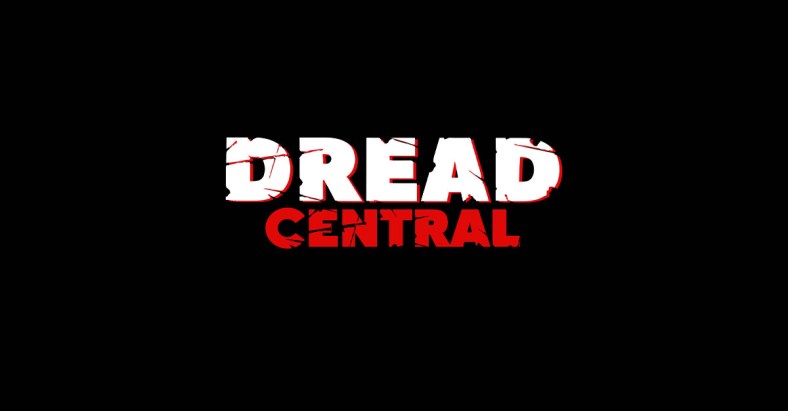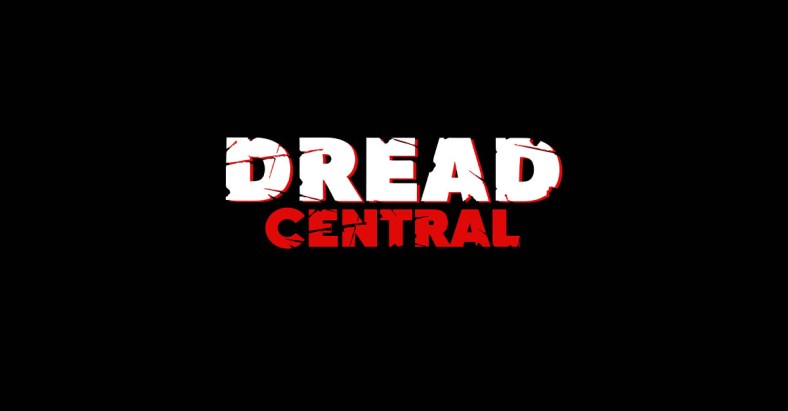Interview: Jigsaw Composer Charlie Clouser

This Friday marks the release of the newest entry in the Saw franchise with the Spierig Brother’s sequel/reboot Jigsaw. To celebrate, we have an exclusive interview with composer Charlie Clouser of NIN!
You can read everything below!
Related Story: Exclusive: Stream Two Tracks From Charlie Clouser’s Jigsaw Soundtrack
Tobin Bell, Mandela Van Peebles (interview), Laura Vandervoort (interview), Brittany Allen, Callum Keith Rennie, Matt Passmore, Hannah Emily Anderson, Josiah Black, Shaquan Lewis, Michael Boisvert, and James Gomez star.
Brothers Peter and Michael Spierig (Daybreakers, Predestination) direct from a script by Josh Stolberg and Pete Goldfiner (Piranha 3D, Piranha 3DD, Sorority Row).
Jigsaw has been rated R for “grisly bloody violence and torture.” It comes out this Friday, just in time for Halloween!

Dread Central: The new Jigsaw film looks to be a stylistic reboot of the Saw series. How was composing the score for this new film different than the previous entries in the franchise?
Charlie Clouser: The look and feel of this latest film, “Jigsaw”, is a bit less dark and murky than most of the earlier installments in the Saw franchise, so it felt appropriate to shift the tone of the score a little more in the direction of the action/thriller genre. Musically this means using brighter, more percussive sounds, high-energy action drums, and saving the blurry, underwater sounds for certain key scenes. Compared to some of the previous installments which seemed to take place almost entirely in dark, dank dungeons, much of “Jigsaw” takes place out in the real world, so it felt right to let a little bit of daylight into the score. Even the trap scenes have music that’s a little brighter and punchier than some of the dirge-like cues I’ve done for the previous movies. It’s still got plenty of the dark and scary stuff, but this time the score’s style kind of follows the Spierig brothers’ brighter and sharper visual style and the settings of each scene a little more closely than in some of the previous films.
DC: What was the collaboration process like with Jigsaw co-directors Michael and Peter Spierig?
CC: Michael and Peter were great to work with, and Peter even went the extra mile and did a few demo pieces of music himself that demonstrated how they thought some of my themes could be reinterpreted with a slightly different set of sounds and a more urgent approach to the rhythms. This helped quite a bit, since we could point to these actual audio examples instead of trying to verbally describe various approaches to the score. This is pretty unusual, but Peter Spierig is quite a talented composer in his own right, and did an excellent score for their film “Predestination”, which also served as a useful point of reference. In the end it was about trying to strike a balance between the ideas that Peter demonstrated so well in his rough demos and the producer’s desire for me to not abandon the style and sonic elements that audiences have come to know as the “sound of Saw”. It was not a difficult task by any means, but something I did need to keep in mind as I worked my way through the film.
DC: As a composer, thus far you have mostly played in the horror sandbox. That said, I couldn’t help but notice you scored James Wan’s amazing action-thriller Death Sentence. How is scoring an action film different than a horror film? If at all.
CC: I had a great time scoring Death Sentence, and I would love to do more films in that genre. It did require a bit of a different approach than I would use for a horror film, in that I could go for a more stripped-down feel as opposed to the claustrophobic, enveloping soundscape that I try to create in the Saw films. I used a lot more pulsing synths and urgent percussion, and in general just more of a “daylight” feel as opposed to Saw’s “permanent darkness”. I’m a big fan of political and espionage thrillers, so it would be great to stretch out a bit into those genres if the opportunity arises.
DC: The “Hello Zepp” theme from Saw is now utterly iconic. Could you tell our readers a bit about how that particular track came to be?
CC: Before I even started on Hello Zepp I knew that it would need to be simple and memorable, and start off with a hypnotic feel that could gradually become more insistent and urgent, building to a full-frontal assault at the end. Once I had this game plan sussed and had roughly mapped out how long each section should be, where the transitions and quiet melodic bits needed to fall relative to the picture, it all came together fairly quickly. I wrote the bulk of the music in about three hours or so, and spent the rest of that day arranging the various string parts so that they could be recorded by a live string quartet the following day. On the third day I integrated those live string recordings with my programmed elements, added the weird little glitchy percussion elements using a circuit-bent drum machine, gave it a final polish and mix, and that was it. I tried to keep it simple and almost mechanical, as opposed to an elaborate, flowery piece that might be hard to follow in the midst of all of the quick flashback cuts and Jigsaw’s voiceover narration. There’s a lot for the audience to take in during the ending montages of all of the Saw films, so I’m glad that I sort of pre-planned what boxes that piece of music would need to tick in order for it to work the way I thought it should. At the time, I had no idea that we’d be doing so many sequels, and that Hello Zepp would become sort of the trademark way to wrap up each film, but as the franchise expanded and I was doing longer and more elaborate versions for each film, I was really glad that I’d taken the time to develop a game plan for that piece instead of just jumping right in.
DC: We are big fans of Rob Zombie here at Dread Central. Based on our research, it seems that you wrote his classic track “Superbeast”. How did that come about?
CC: Well, I think a more accurate description would be that I CO-wrote a few tracks with Rob. He’s a super talented guy and has no problem developing and expressing his creative ideas clearly, that’s for sure. I had worked on White Zombie’s “Astro Creep” album, adding programmed drums and synths to most of the tracks, and then I did a whole bunch of remixes which appeared on the “Supersexy Swingin’ Sounds” release, so when Rob decided to do a solo album I was all in. We got along great and shared a lot of the same views about how we thought heavy music should sound, so it was a natural fit. I definitely understand the idea that “more is MORE” and so we got on great in that department. We continued to collaborate on new songs and remixes throughout the late 1990’s and early 2000’s, and had tracks in the “Matrix” movies, culminating with my version of his song “Reload” which was in “The Matrix : Reloaded” and which I programmed and mixed at my studio.
DC: Which Saw sequel has been your favorite thus far?
CC: Besides the original “Saw”, which will always be special to me, I think the second film was my favorite, both to watch and to compose the music for. That was the film that showed me how deep Jigsaw’s storyline could go, and how the writers could expand upon the basic premise to create a detailed universe that could be explored for years to come. I also had a great time doing that score because I got to work with my old friend Danny Lohner from NIN as well as guitarist Wes Borland, whose work I’ve always admired. Wes is such a creative and talented guitarist whose style goes so far beyond what we all hear in Limp Bizkit records (even though some of those riffs are absolutely crushing), and it was fun to see him get a little experimental in the context of a film scoring environment.
DC: A Charlie Clouser scored Friday the 13th, Halloween, or Nightmare on Elm Street flick sounds like a dream come true. Which horror franchise would you love to get your hands on?
CC: That is a tough question, because all of the classics already have such well-established and iconic themes, and I’d be afraid of messing up what the die-hard fans know and love. That said, it would be fun to take a stab at re-interpreting John Carpenter’s “Halloween” because it’s got a lot of the qualities I like – simple, insistent, hypnotic pieces that can withstand being manipulated and re-mixed into lots of different variations. Lots of Carpenter’s music is right down my alley, with those dark, pulsing synth lines and weird synthetic textures. I’d have to be careful about stepping up to a remake or sequel of any of his films, but I sure wouldn’t turn down the opportunity.
DC: What’s next?
CC: I’m doing this interview from the middle of the rainforest in Far North Queensland, Australia, north of Mossman, where I came to unwind after compiling two album releases for Lakeshore Records. The first is a digital-only release of the best 72 minutes of score from “Jigsaw”, and the second release, which will be out a little later, is the “Saw Anthology” album. That one will be a two-CD, four-vinyl-album release with the best bits from the scores of all eight of the Saw movies. I had to go through over 400 pieces of music, totaling more than ten hours of running time, in order to remix, edit, and compile it down to about eighteen minutes per film. This let me treat each vinyl side as a miniature journey through a single film, with the whole release presenting the music from the whole saga in chronological order, just as it appeared in the films. I think it came out great, but it was no easy task, and it took me more than a month to get through it. So, for the moment, the only things on my schedule are hiking the jungle and diving the Great Barrier Reef. Could be worse I guess!
Synopsis:
Bodies are turning up around the city, each having met a uniquely gruesome demise. As the investigation proceeds, evidence points to one man: John Kramer. But how can this be? The man known as Jigsaw has been dead for over a decade. Or has an apprentice picked up the mantle of Jigsaw, perhaps even someone inside the investigation?

Categorized:News

